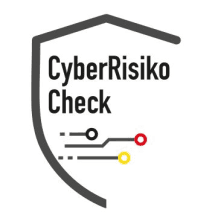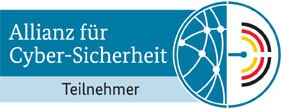Protection goals of information security

Share the blog with others
The Information Security Management System (ISMS) and Its Importance in Today's Business World
In an era where data is referred to as the new gold, it is essential for businesses and organizations to protect their most valuable resources - their information. The Information Security Management System, better known as ISMS, plays a crucial role here. It is a systematic approach to protecting sensitive corporate information from security threats, unauthorized access, and data loss.
An effective ISMS not only protects a company’s data but also ensures that data integrity, availability, and confidentiality are maintained in all business processes. It helps companies identify, assess, and implement appropriate control measures to minimize these risks. In today’s digital era, where cyberattacks and data breaches are commonplace, such a system can mean the difference between a company's survival and its downfall.
Furthermore, a well-implemented ISMS fosters trust among customers, partners, and stakeholders. When they know that their data is secure and protected, they are more likely to do business with the company. This can lead to increased business opportunities and a competitive advantage.
Overall, the ISMS is not just a tool for securing data but also a strategic instrument that helps companies succeed in the modern business world. It enables businesses to adapt to the constantly changing security requirements while achieving their business objectives. In a world where data is becoming increasingly significant, it is essential for every company to implement and maintain a solid ISMS.
What Exactly Is an ISMS?
An ISMS, or Information Security Management System, is more than just a collection of policies or procedures. It is a comprehensive system aimed at ensuring the confidentiality, integrity, and availability of corporate information. It represents a proactive and systematic approach that helps companies identify, assess, and implement appropriate controls to minimize these risks.
The core of an ISMS is continuous improvement. It requires regular reviews and adjustments to ensure that security measures are always up to date and correspond to the ever-changing threats. This involves not only technical measures but also organizational and cultural aspects. Employees are trained and made aware of the importance of information security and how to act accordingly.
Another essential aspect of an ISMS is the involvement of top management. The leadership must recognize the importance of information security and provide the necessary resources to effectively implement and maintain the ISMS. Only with full management support can an ISMS realize its full potential and protect the company from the myriad threats in the digital world.
In summary, one can say that an ISMS is not just a technical tool but a holistic approach that involves all levels of a company. It ensures that information is protected at every stage of its lifecycle, from creation to destruction, and that all involved receive the necessary training and support to fulfill their role in protecting these valuable resources.

The Difference Between IT Security, Cyber Security, and Information Security
While many use the terms IT security, Cyber Security, and Information Security interchangeably, there are subtle differences worth highlighting. IT security primarily focuses on protecting information technology and digital data. This includes safeguarding hardware, software, networks, and data from physical or virtual attacks. It is about ensuring that a company or organization’s technological resources are protected from any unauthorized access, damage, or theft.
Information security, on the other hand, has a broader focus and includes the protection of all types of information, whether in digital, printed, or verbal form. It considers the entire lifecycle of information, from its creation to its use and finally to destruction or archiving. This encompasses both technical and physical security measures to ensure that confidential information does not fall into the wrong hands or is misused.
Cyber Security, another term in this context, specifically focuses on the protection of systems, networks, and data in cyberspace. It is about protecting against cyberattacks, data breaches, and identity theft. While IT security and information security often include aspects of cyber security, cyber security is more specifically geared towards threats from the digital realm.
Although these terms are often used interchangeably, each has a specific focus and application area. It is important to understand these differences to ensure that both the digital and physical information of a company or organization are comprehensively protected.
The 3 Key Goals of Information Security
The goals of information security play a crucial role in today’s digital world, where data is often seen as a company’s most valuable asset. Information security is not just about protecting data from cybercriminals, but it has deeper and broader objectives. The three main goals of information security are:
Confidentiality: This refers to the protection of information from unauthorized access. It is about ensuring that information is only accessible to those who are authorized. This can be achieved through various means, such as encryption, password protection, or biometric methods. Maintaining confidentiality helps protect trade secrets, ensure data privacy, and sustain the trust of customers and partners.
Integrity: Integrity refers to the accuracy and completeness of data. It is important to ensure that information is not altered, damaged, or manipulated in any way, whether intentionally or accidentally. Mechanisms such as digital signatures or checksums can help verify the integrity of data and ensure that it has not been altered without detection.
Availability: This goal ensures that information and associated resources are available when needed. This can be especially important for businesses that rely on real-time data or for organizations that operate critical infrastructures. By implementing redundancies, disaster recovery plans, and regular backups, it is ensured that systems and data remain accessible even during outages or attacks.
In addition to these main goals, there are also secondary goals such as authenticity, accountability, and non-repudiation that can be relevant depending on the context and requirement. Overall, information security aims to create a secure environment in which businesses and organizations can achieve their objectives without being hindered by security breaches.
Responsibility in a Company
The responsibility for information security should not lie with a single department or individual. It is a shared responsibility that spans from management to the newest employee. Everyone has a role to play, and it is crucial that all within the company understand the importance and value of information security.
Management bears ultimate responsibility for the security of corporate data. They must ensure that appropriate resources, both financially and in terms of personnel, are allocated for the implementation and maintenance of security measures. Furthermore, the leadership should lead by example and underscore the importance of information security through their actions and decisions.
The IT department, often the first link in the chain of information security, is responsible for implementing technical security measures, monitoring systems for anomalies, and responding to security incidents. They must stay constantly updated on technology and the threat landscape to protect the company from current and future risks.
Employees in other departments, whether in sales, marketing, finance, or human resources, interact daily with corporate data. They need training to recognize and report potential security risks and to ensure they follow best practices regarding password protection, data sharing, and other relevant procedures.
New employees should receive basic training in information security upon hiring. This ensures that they develop the right habits from the outset and are aware of the company's security protocols.
Information security is a collective effort that requires the commitment and involvement of all levels of a company. By creating a culture of security awareness and continuously training and sensitizing employees, a company can effectively protect its data and minimize the risk of security breaches.

The Added Value of an ISMS for Companies
A well-implemented Information Security Management System (ISMS) provides companies with numerous advantages that go beyond mere data protection. It not only helps to minimize risks but can also strengthen the trust of customers, partners, and stakeholders. In a world where data breaches and cyberattacks are commonplace, a robust ISMS can give a company a significant competitive advantage.
Reputation protection: An effective ISMS can help protect a company’s image and reputation. Customers and partners want to know that their data is safe. A company that can demonstrate a high standard of security is viewed as trustworthy and reliable.
Compliance with legal regulations: Many industries and countries have stringent data protection and security regulations. An ISMS can help companies comply with these regulations and avoid potential fines or sanctions.
Cost savings: Although implementing an ISMS requires initial investments, the long-term savings can be substantial. The costs that can arise from security breaches, data loss, or legal disputes often outweigh the investment in a solid security system.
Improvement of business relationships: An ISMS can help strengthen business relationships. Partners and suppliers may be more willing to work with a company that takes its security measures seriously and has been proven to be secure.
Employee awareness: An ISMS also promotes security awareness among employees. Through regular training and awareness campaigns, employees become a first line of defense against potential threats.
Proactive risk assessment: Instead of only reacting to security incidents, an ISMS enables companies to proactively identify risks and take action before they become a problem.
Overall, an ISMS offers far more than mere technical protection. It is a comprehensive framework that helps companies remain competitive and secure in today’s complex and ever-changing digital landscape.
Standards and Regulations:
Implementing an Information Security Management System (ISMS) in a company is a complex process that requires careful planning and knowledge of applicable standards and regulations. In Germany, there are specific guidelines and standards that help companies in the introduction of an ISMS.
BSI Standards: The Federal Office for Information Security (BSI) has developed a number of standards and best practices that can serve as a basis for implementing an ISMS. For example, the BSI standard 100-1 describes the requirements for an ISMS, while the BSI standard 100-2 addresses the process of risk analysis and assessment.
ISO/IEC 27001: This international standard is widely used in Germany and sets out the requirements for the establishment, implementation, monitoring, and improvement of an ISMS. Certification according to ISO/IEC 27001 can help companies strengthen the trust of customers, partners, and stakeholders.
General Data Protection Regulation (GDPR): Although the GDPR is primarily a data protection instrument, it also contains provisions for information security. Companies must take appropriate technical and organizational measures to ensure the security of personal data.
IT Basic Protection: The IT Basic Protection of the BSI provides a methodical approach to identifying and implementing security measures. It is based on internationally recognized standards but is specifically tailored to the needs of German companies.
Guide for Implementing an ISMS:
Raising awareness: Raise awareness among management and employees about the importance of information security.
Risk assessment: Identify potential risks and assess their impact on the company.
Selection of security measures: Based on the risk assessment, appropriate security measures should be selected and implemented.
Training and awareness: All employees should be regularly trained regarding security policies and procedures.
Monitoring and review: The ISMS should be regularly monitored and reviewed to ensure that it is effective and meets current threats.
Continuous improvement: Based on the results of monitoring and review, adjustments and improvements to the ISMS should be made.
Implementing an ISMS requires not only technical expertise but also a deep understanding of applicable standards and regulations. By following the above guidelines and standards, companies can ensure that their ISMS meets requirements and effectively protects against threats.
Protect your corporate data in our interconnected world! Rely on an ISMS – not just as a tool for risk reduction but also as a clear signal to customers and partners that you take your responsibility for information security seriously. Act now!








